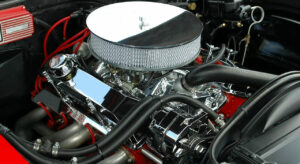Hey there, fellow car owners! If you’re like me, you probably rely heavily on your car to get you from point A to point B. And just like how we need regular check-ups and maintenance to stay healthy, our cars need regular attention to stay in tip-top shape.
That’s where following a car’s recommended maintenance schedule comes in. Failure to follow the manufacturer’s schedule may result in a variety of issues – from fuel efficiency issues to engine failures and accidents. Trust me, I’ve learned this the hard way.
So, what kind of maintenance is required to keep our cars running smoothly? Basic tasks like oil changes, tire rotation, brake maintenance, and fluid checks are all essential. However, there are also more advanced tasks such as replacing timing belts and spark plugs at certain intervals.
In this blog post, we’ll go over a few car’s recommended maintenance schedules, including why it’s important, what types of maintenance are required, and some tips for keeping your car in top shape. Let’s get started!
Understanding Your Car’s Maintenance Schedule
A maintenance schedule is a set of guidelines provided by the manufacturer that outlines when specific maintenance tasks should be performed. These tasks are designed to keep the car running smoothly and prevent any major issues from occurring.
So why is it so important to follow this schedule? Well, for starters, it can save you money in the long run. Regular maintenance can help prevent major repairs that could cost thousands of dollars.
Additionally, it can help extend the life of your car and increase its resale value. But how do you find your car’s recommended maintenance schedule? Here are a few ways:
- Consult the owner’s manual: The owner’s manual that comes with your car should have a section dedicated to maintenance. This section will outline the recommended maintenance tasks and when they should be performed.
- Contact the dealership: If you don’t have access to the owner’s manual, you can contact the dealership where you purchased the car. They should be able to provide you with the recommended maintenance schedule for your specific make and model.
- Use online resources: There are many websites that offer maintenance schedules for different makes and models of cars. Some popular ones include Edmunds, Kelley Blue Book, and RepairPal.
It’s important to note that not all cars will have the same maintenance schedule. Factors such as the make, model, and year can all play a role in determining what maintenance tasks need to be performed and when.
Here Are Some Basic Chrysler Maintenance Tasks That You Should Know
Basic Dodge, Ram, and Chrysler maintenance plans are essential for keeping our cars running smoothly and preventing major issues. Let’s take a closer look at some of the most important basic maintenance tasks that should be performed regularly:
A. Regular Oil Changes
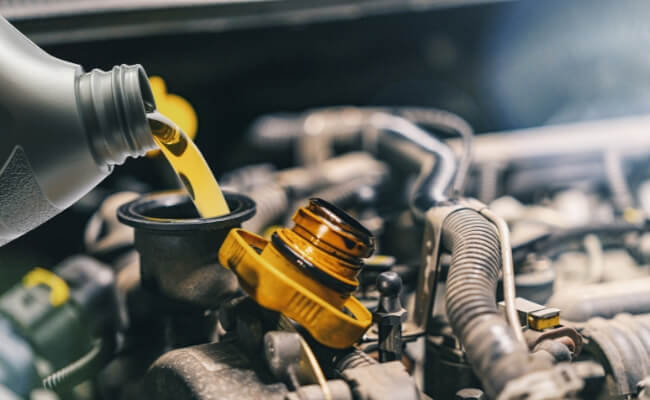
Changing the oil in your car is one of the most important maintenance tasks. It’s recommended to change the oil every 5,000 to 7,500 miles or every six months. Fresh oil helps lubricate the engine, reducing wear and tear and extending its life.
B. Tire Rotation & Alignment
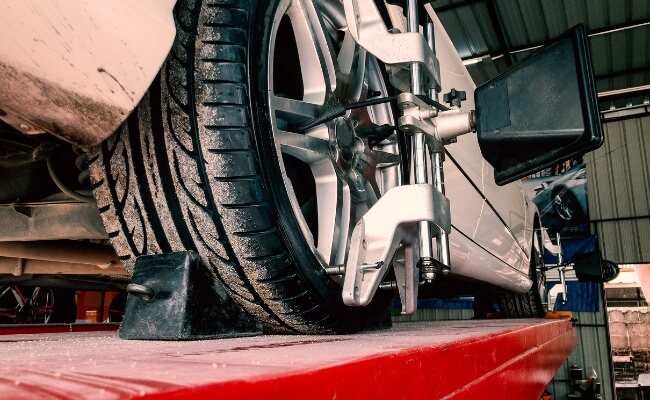
Rotating your tires helps ensure even wear and can extend their lifespan. It’s recommended to rotate your tires every 5,000 to 7,500 miles. Additionally, getting your tires aligned can help improve handling, reduce tire wear, and increase fuel efficiency.
C. Brake Maintenance
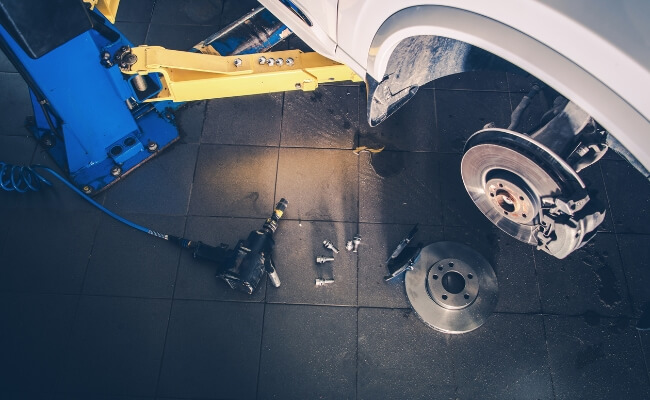
Regular brake maintenance is crucial for ensuring your car stops when you need it to. This can include replacing brake pads and rotors, flushing brake fluid, and inspecting brake lines. It’s recommended to have your brakes inspected every 12,000 miles or annually.
D. Battery Maintenance
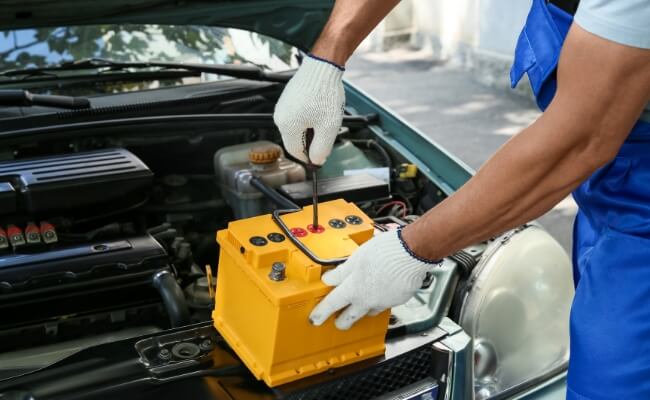
A dead battery can leave you stranded, so it’s important to make sure your battery is in good condition. This can include cleaning the terminals, checking the electrolyte levels (if applicable), and testing the battery’s charge. It’s recommended to have your battery inspected every 12,000 miles or annually.
E. Fluid Checks & Changes
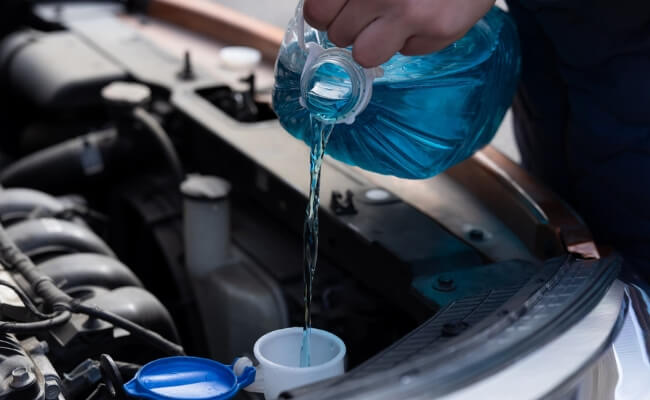
Your car relies on a variety of fluids to function properly, including coolant, transmission fluid, and power steering fluid. Regularly checking these fluids and replacing them as needed can help prevent major issues from occurring. It’s recommended to have your fluids checked every 5,000 to 7,500 miles.
You can get it all done at Mopar schedule service. All you need to do is go to their website and choose your vehicle and get a 2-month, 4-month, or 6-month car service.
Additional Maintenance Tasks – Chrysler Maintenance Plan
In addition to the basic maintenance tasks we covered earlier, there are a few additional Dodge, Ram, Chrysler maintenance tasks that should be performed to keep your car running smoothly. Let’s take a closer look at some of these tasks:
1. Timing Belt Replacement
The timing belt is responsible for synchronizing the engine’s valves and pistons. Over time, the timing belt can become worn and may need to be replaced. It’s recommended to replace the timing belt every 60,000 to 100,000 miles, depending on the make and model.
Failure to replace the timing belt can result in costly engine damage.
2. Spark Plug Replacement
Spark plugs play a critical role in starting your car’s engine and keeping it running smoothly. Over time, spark plugs can become worn and may need to be replaced. It’s recommended to replace the spark plugs every 30,000 to 100,000 miles.
Failing to replace the spark plugs can lead to poor engine performance, reduced fuel efficiency, and even engine damage.
3. Air Filter Replacement
Your car’s air filter is responsible for keeping dust, dirt, and other debris from entering the engine. Over time, the air filter can become clogged, reducing airflow and engine performance. It’s recommended to replace the air filter every 12,000 to 15,000 miles or once a year.
Failing to replace the air filter can lead to reduced engine performance, reduced fuel efficiency, and even engine damage.
Suggestion: Say Goodbye to Dirty Carburetors with These 7 Highly Rated Ultrasonic Cleaners.
4. Fuel Filter Replacement
The fuel filter is responsible for keeping dirt and debris from entering the fuel system. Over time, the fuel filter can become clogged, reducing fuel flow and engine performance.
It’s recommended to replace the fuel filter every 20,000 to 40,000 miles. Failing to replace the fuel filter can lead to reduced engine performance, reduced fuel efficiency, and even engine damage.
Recommended Maintenance Schedule For Chrysler, Dodge, And RAM Vehicles

Maintaining your Chrysler, Dodge, or RAM vehicle is essential for its longevity and performance. Follow the recommended maintenance schedule to ensure your vehicle runs smoothly. Regular oil changes, tire rotations, and brake inspections are crucial.
Related: Luxury and Protection: A Closer Look at the Top 8 Seat Covers for High-End Vehicles.
Keep your vehicle in top condition and avoid costly repairs by following the Dodge, RAM, and Chrysler recommended maintenance schedule.
1. Chrysler Maintenance Schedule
The following is a Chrysler recommended maintenance schedule. Maintenance intervals and services may vary depending on the model and year. Always refer to the owner’s handbook and consult with your service adviser.
Once A Month & Before Long Trips
- Check the fluid levels, which include Oil Coolant, Brake Fluid, Windshield Washer Fluid, and Power Steering Fluid.
- Inspect tires for uneven wear or damage and check tire pressure.
- Check your spare tire and make sure you have the necessary tools.
- Examine your external lights, which include headlights, brake lights, backup lights, and turn signals.
Oil Change Intervals (3,500+ Miles)
Oil changes are among the most critical Chrysler service schedules, but that’s partly because they serve as a reminder to check other items as well.
Don’t Miss To Checkout: Power and Sound Unleashed: The 7 Best Exhaust Options for your Dodge Challenger RT.
- Replace your oil and filter.
- Examine the exhaust system.
- Examine the cooling system’s protection and hoses.
- Inspect the battery and, if required, clean and tighten its terminals.
- Inspect your brakes (pads/rotors or shoes/drums), brake lines, and parking brakes.
- Rotate your tires. Remember to rotate your tires at the first indication of uneven wear, even if it’s before your oil change.
20,000 miles/ 2 years (Every 20,000 Miles)
- Inspect CV Joints
- Replace the engine air cleaner filter
- Replace air conditioning/cabin air filter
- Inspect the brake linings, parking brake function
- Inspect the front suspension, boot seals, and tie rod ends, and replace if necessary
100,000 Miles/ 10 Years
- Inspect CV Joints
- Replace spark plugs
- Replace air conditioning/cabin air filter
- Inspect and replace the PCV valve if necessary
- Inspect the brake linings, parking brake function
- Inspect the front suspension, boot seals, and tie rod ends, and replace if necessary
- Flush and replace the engine, power electronics, and battery coolant at 10 years or 150,000 miles (240,000 km), whichever comes first
Similar Post: Top 10 Cheapest Sports Cars To Consider: Best Affordable Sports Cars.
150,000 Miles/ 15 Years
- Replace the engine air cleaner filter
- Inspect the front accessory drive belt, tensioner, and idler pulley, and replace them if necessary
- Flush and replace the engine, power electronics, and battery coolant at 10 years or 150,000 miles (240,000 km), whichever comes first.
2. Dodge Maintenance Schedule
With our comprehensive Dodge service schedule, you can keep your car in great condition, from the Dart to the Viper.
To keep up with your automobile care and maintenance needs, you may find a complete Dodge Maintenance Schedule below. Always refer to your owner’s handbook for complete information.
Also Read: Unleashing the Power of Maintenance: Top 7 Oil Filter Wrenches for Optimal Toyota Performance.
Once A Month & Before Long Trips
- Check the fluid levels, which include Oil Coolant, Brake Fluid, Windshield Washer Fluid, and Power Steering Fluid.
- Inspect tires for uneven wear or damage and check tire pressure.
- Check your spare tire and make sure you have the necessary tools.
- Examine your external lights, which include headlights, brake lights, backup lights, and turn signals.
Oil Change Intervals (3,500+ Miles)
Oil changes are among the most critical dodge service schedule, but that’s partly because they serve as a reminder to check other items as well.
- Replace your oil and filter.
- Examine the exhaust system.
- Examine the cooling system’s protection and hoses.
- Inspect the battery and, if required, clean and tighten its terminals.
- Inspect your brakes (pads/rotors or shoes/drums), brake lines, and parking brakes.
- Rotate your tires. Remember to rotate your tires at the first indication of uneven wear, even if it’s before your oil change.
Suggestion: Protecting your Precious Cargo: A Review of the 7 Best Maxi Cosi Infant Car Seats.
20,000 miles/ 2 years (Every 20,000 Miles)
Check all of the following things on the checklist every 20,000 miles, not only on 20,000 miles:
- Examine CV Joints.
- Examine the brake linings and parking brakes.
- Inspect the air conditioner and change the filter.
- Inspect the engine air filter and replace it if necessary.
- Examine the front suspension, boot seals, and tie rod ends.
100,000 Miles/ 10 Years
At 100,000 miles, remember to do all of the 20,000-mile maintenance items as well as the following:
- Replace the spark plugs.
- Inspect and replace the PCV valve.
- Inspect and replace any power electronics.
150,000 Miles/ 15 Years
Some cars may not reach 150,000 miles, but Dodge automobiles are among the most trustworthy on the market. So, when you reach 150,000 miles, go the additional mile for your vehicle:
- Inspect the tensioner and replace it if required.
- Inspect the idler pulley and replace it if required.
- Examine the front auxiliary drive belt and replace it if required.
3. RAM Maintenance Schedule
RAM trucks are among the roughest and most technologically advanced pickups on the market today. No matter what job you throw at it, if you take care of your RAM, it will take care of you and your family.
We recommend that you adhere to the following RAM maintenance schedule, which is dependent on the number of months or miles traveled.
Similar Post: New Toyota Tacoma Review, Price, Trim Levels, Photos, & Release Date.
Monthly & Before Long Road Trips
- Examine the engine oil levels
- Examine the windshield washer fluid levels.
- Check the tire pressure.
- Examine for unusual wear or damage.
- Examine the fluid levels
- a reservoir for coolant
- Transmission fluid Brake fluid
- Fluid for power steering
- Examine the interior and external lighting.
Every 8,000 Miles & 6 Month Car Service
- Replace the tires.
- Replace the engine oil and oil filter.
- Examine the exhaust system, battery connections, brake pads, and door locks.
Oil changes are the most important RAM maintenance you’ll require over the life of your car since they maintain the pistons operating correctly.
16,000 Mile or 12 Month Car Service (Every 16,000 Miles)
- Rotate the tires.
- Check the exhaust system.
- Replace the engine oil and filter.
- Replace the air conditioner filter (if installed).
- Clean the brake linings and replace them if necessary.
- If you use your car in dusty or off-road situations, examine the engine air cleaner filter and replace it if necessary.
- Check the front suspension, tie rod ends, and boot seals for cracks or leaks, and other parts for damage, wear, inappropriate looseness, or end play; repair as needed.
104,000 Mile or 78-Month Maintenance
- The tires should be rotated.
- Engine oil and filter should be changed.
- If not done after 60 months, flush and replenish the engine coolant.
120,000 and 150,000 Miles
Your vehicle’s engine is most likely out of warranty at this time. For 4WD or AWD powertrains, the transfer fluid case must be inspected. You should replenish the fluid after 150,000 miles. As your engine ages, you should replace the coolant, regardless of the radiator’s condition.
Do you have a RAM maintenance problem that has to be fixed right away? Make an appointment with Mopar schedule service now!
Top FAQs About Dodge Maintenance Schedule
What Are The Dodge, Ram, and Chrysler Recommended Maintenance Schedules?
As a car owner, it’s crucial to keep up with routine maintenance services. These are typically scheduled at 30-60-90 intervals. It means it’s important to perform essential preventative maintenance every 30,000 miles.
The wearing out of individual parts varies from vehicle to vehicle, depending on your driving habits. That’s why it’s important to pay attention to your car and its needs to ensure it stays in top condition. So, take care of your car and it will take care of you on the road.
What Is The Mopar Recommended Service?
It’s important to follow the recommended maintenance schedule. This includes everything in the 7,500-mile interval, plus additional services recommended every 30,000 miles.
These services help ensure your vehicle stays in top condition and performs at its best. So, don’t skip out on these important intervals and take care of your vehicle.
What Is The 6 To 1 Rule In Maintenance?
It’s essential to find the right balance between preventative maintenance and corrective tasks. The 6:1 rule suggests that for every six preventative tasks, you should have one corrective task.
If you have more corrective tasks, it means you’re not doing enough preventative maintenance. On the other hand, if you’re doing more PMs than necessary for each corrective task, you’re doing too much.
What Are The 4 Levels Of Maintenance?
The four levels of maintenance are:
- Corrective maintenance.
- Preventive maintenance.
- Risk-based maintenance.
- Condition-based maintenance.
What Are The Three Main Brands Of Chrysler?
As a car enthusiast, you may know that Fiat Chrysler Automobiles is the parent company of several well-known automakers. These include Chrysler, Fiat, Dodge, Jeep, Maserati, Alfa Romeo, and RAM.
It’s important to note that Chrysler, Jeep, Dodge, and RAM are all owned and produced by Fiat Chrysler Automobiles. Choosing a new vehicle depends on understanding the relationships between these brands.
Final Thoughts
As a car owner, following the Dodge, Ram, or Chrysler recommended maintenance schedules is crucial. Regular maintenance can help extend the life of your car and prevent costly repairs down the line. By taking care of your vehicle, you can ensure it stays in top condition and runs smoothly for years to come.
So, don’t neglect your vehicle’s needs, and follow the recommended schedule to keep your car in tip-top shape. Remember, a little maintenance now can save you time and money in the long run.






